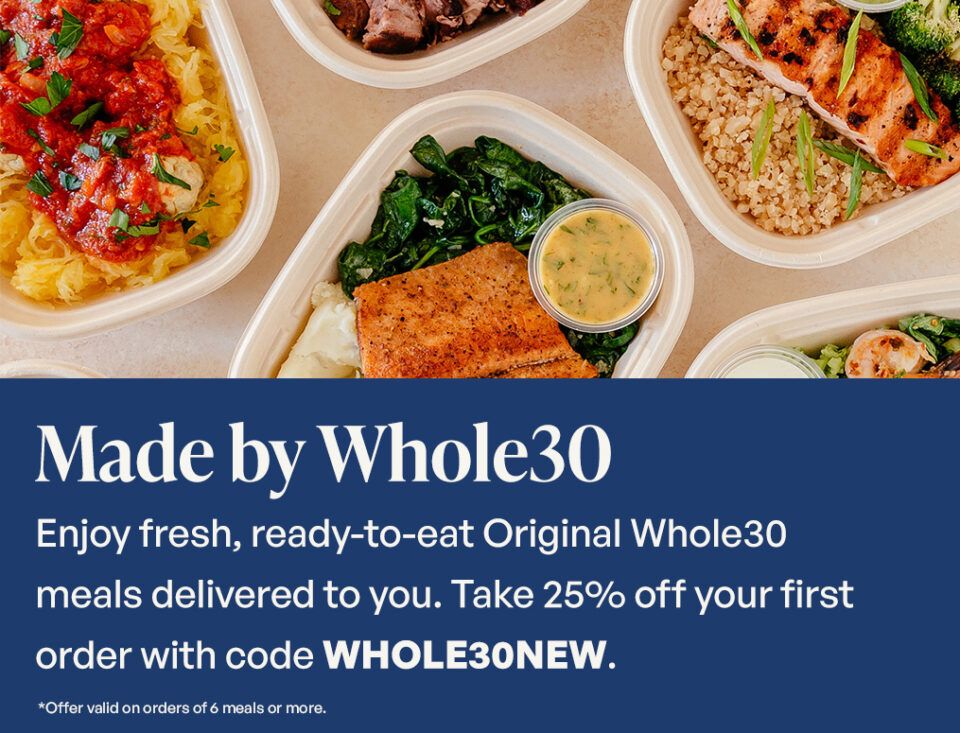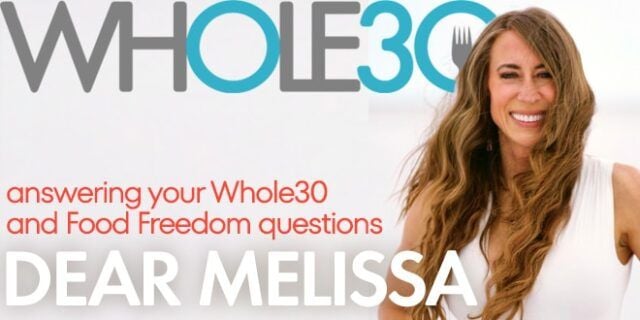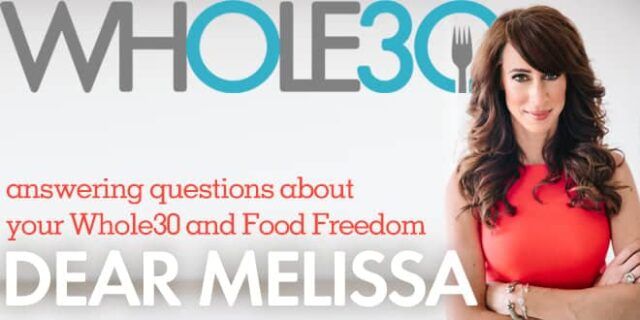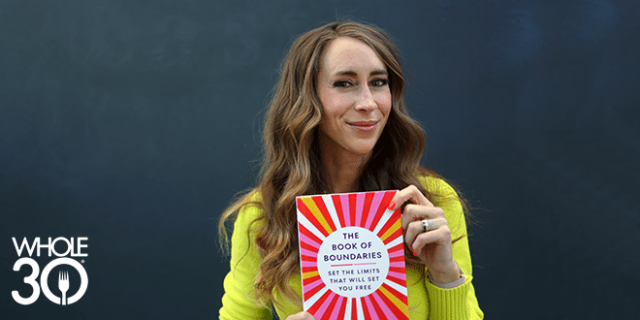By Melissa Urban, a superplanner when it comes to travel.
You’ve been seeing promotions for our NEW book, The Whole30: The 30-Day Guide to Total Heath and Food Freedom, all over our website and social media feeds. We’ve answered your most commonly asked questions about the book, and gave you exclusive sneak peeks right here on the Whole30 blog. And in April and May of 2015, I embarked upon a 4-week, 13-city Whole30 book tour.
Whole30 Business Travel 101
On this tour, we hit the road for a non-stop whirlwind of city after city—something you never really get used to, no matter how much you travel for business. And it presented the perfect opportunity for Melissa to share with all of you her strategy for preparing for a business trip, to help you plan for your next cross-country travels. Why Melissa? Because of the two, she’s the super-uber-master-planner—which can sometimes be annoying, but is actually pretty helpful when your schedule is complicated, your time is limited, and the reason you’re traveling is stressful enough all on its own.
Point number one: when it comes to business travel, you must have a plan. (If your company plans your travel, you may not have a say in all of these factors. Just do the best you can to communicate your preferences to your travel coordinator, and take over the planning wherever you can; see below for suggestions.)
Point number two: you might think our plan is all about finding Good Food, but it’s not. A good business travel plan is about minimizing stress. If you’re relaxed and at ease, getting to a restaurant and dealing with a boring burger (no bun) and garden salad with oil and vinegar for lunch is no big deal. But if you arrive stressed and anxious, that burger is going to look a whole lot better with melted cheese, a side of fries, and a craft beer. Stress ruins everything, including your healthy eating plans, so our goal is to keep our trips as stress-free as possible.
Flight and Hotel
We usually use the night we arrive as food-prep time, stocking up on healthy on-the-go snacks and water for the following day(s). So when booking your flight, try not to land between 3 and 5 PM, which (after collecting bags and a rental car) puts you on the road smack in the middle of rush hour. Trust us, being stuck on the highway for an hour the moment you arrive is not a fun way to kick off your trip.
After you book your flight, it’s time to look for a hotel. If you have the option, look for one close to either the event venue or in a shopping district, where you’ll have a grocery store, coffee shop, and restaurants nearby. Ideally, your hotel has a fridge and a microwave (we choose chain hotels where these items come standard with your room—anything with “Suites” in the name is a good bet), but all hotels keep a few refrigerators on-hand for guests who request one. As soon as your room is booked, call the hotel and see if they can place one in your room before you arrive—the availability of a fridge will dictate your “stocking up on food” strategy.
Food (and Coffee) Resources
I’d then plan every single breakfast, lunch, and dinner we’d be eating on the road, to the extent that I could. Because what’s more fun that scrolling through Yelp on your iPhone at 8 PM looking for a healthy-looking restaurant that can seat you pretty fast when you have a car full of hangry co-workers (perhaps including your boss)? Um, everything.
Yelp, Open Table, and Google are all great options for finding healthy food on the fly. Before I left the comfort of my office computer, I’d search for a breakfast place near the hotel, make sure they were open early enough to accommodate our needs, and call to make sure they were still in business and verify their hours. (Trust me on this one, it’s worth the extra step.) If breakfast is offered in your hotel, even better—just make sure it’s a real breakfast with eggs (bare minimum), and not a pastry-laden “Continental” buffet.
Once I had breakfast set, I’d move onto dinner. For every night we were on the road, we had dinner reservations scheduled. We never leave dinner to chance, especially if our travels include a Thursday, Friday, or Saturday night (popular for dining out). I’d research restaurants ahead of time by looking on Yelp by city or specific address/neighborhood; you don’t want to have to drive 30 minutes from one end of San Diego to the other just for one dinner. Categories of “American New” usually offer your healthiest choices, but you can also search for specific terms like “organic” or “grass-fed.” Here’s how my research goes:
- Search for “dinner” close to my hotel address
- Narrow the search by “American New” and driving distance radius
- Look at restaurant menus one-by-one
- Attempt to make a reservation through their system, Open Table, or calling directly
- Repeat until all dinners are scheduled
Yes, this is time consuming. So is driving around downtown any-major-city at 7 PM on a Friday night looking for a healthy restaurant that can accommodate your party. Knowing our dinner plans were set took a ton of stress off our shoulders on days when we’d finish a seminar and be exhausted, hungry, and kind of brain-dead.
We rarely chose places that didn’t accept reservations, unless we knew we’d be eating at an off time. Generally if you’re dining before 6 PM or after 9 PM, you’re pretty safe to walk into just about anywhere and get seated. Otherwise, you’re better off with a reservation, unless you choose a giant chain (like a Cheesecake Factory) with hundreds of tables and generally short wait times.
Yes, you can find a healthy meal at Cheesecake Factory. Or Olive Garden. Or Applebees. Check our Dining Guide to help you make healthy Whole30 choices in literally any restaurant.
Finally, I’d plan lunch—usually the least important meal to plan in detail, because we were either eating on-site as part of our events or our day was pretty free, meaning we could find a lunch spot on the fly. Still, having a few ideas is helpful here, even if it’s the noting the Whole Foods down the road has a prepared food bar.
Documentation
Next, I’d map out the locations we’d need for the trip, all in one document that I’d email to myself and my travel companion(s) right before we left. I’d include:
- The hotel
- The event venue (or business meeting locations)
- A nearby grocery store
- A nearby coffee shop
- Breakfast, lunch, and dinner locations
Each line item would include the business name, address, a telephone number, and hours—super helpful if your flight is delayed and you’re wondering if you should bother to go for groceries at 9 PM. Each dinner location would also include the time of the reservation and the number of people in the party.
Note: This sounds like overkill, I know. Just keep reading.
Packing
Depending on the length of trip, I’d always pack enough on-the-go travel food to get us through the flight, any potential delays, and the return flight, just in case. (We discuss this in the Travel section of The Whole30, but you can also download our Travel Guide and check our Whole30 Approved page for travel food ideas. We also love the Barefoot Provisions Whole30 Emergency Kit.)
The Arrival
It’s travel day! You’re armed with your emergency stash of food for the flight or drive, and your super-detailed itinerary. And herein lies the beauty of all of that planning that you thought was a little bit anal-retentive. (Admit it—you did. That’s okay, because I’m about to say “I told you so.”)
Once you land, all you have to do is follow the plan. No guesswork; no wandering around a strange city stressed, anxious, and hungry; and no chance you’ll say, “Screw it, let’s just get pizza.” You have a plan, which means your brain is at ease, your co-workers (and boss) think you’re some kind of business travel rock star, and you’re much more likely to maintain your healthy eating habits on the road.
And here’s the genius of having a plan—you can always go off-plan if the opportunity arises, no harm done. If your co-workers would rather try the sushi place next door to the hotel for dinner instead of the place you reserved, no problem! But if the sushi place turns out to be closed (or too busy), you’ve still got your back-up reservation, and you’ve totally saved the day. Again.
With this strategy, you’ll find your business trips are 79% less stressful. (Yes, we’ve done the math.) Another unexpected bonus—you’ll also enjoy your trip more. Part of the fun of traveling includes exploring new restaurants, local foods, and cultures. By researching from the comfort of your own office, you’re able to seek out exciting, interesting, or award-winning dining experiences, interjecting some tasty deliciousness into what can be an otherwise boring or predictable grind.
And here it comes: I told you so.








